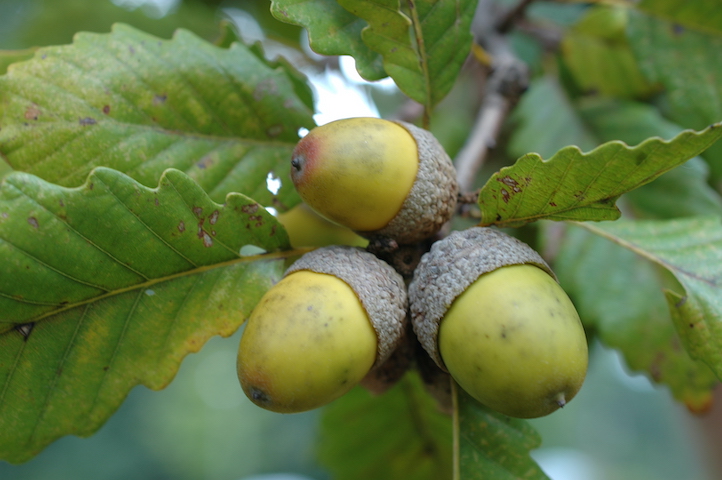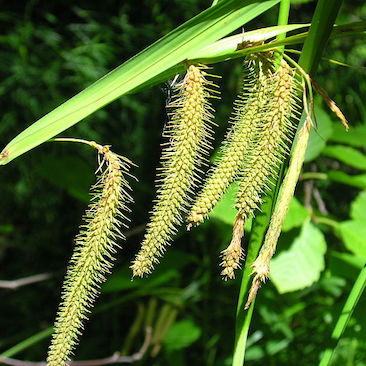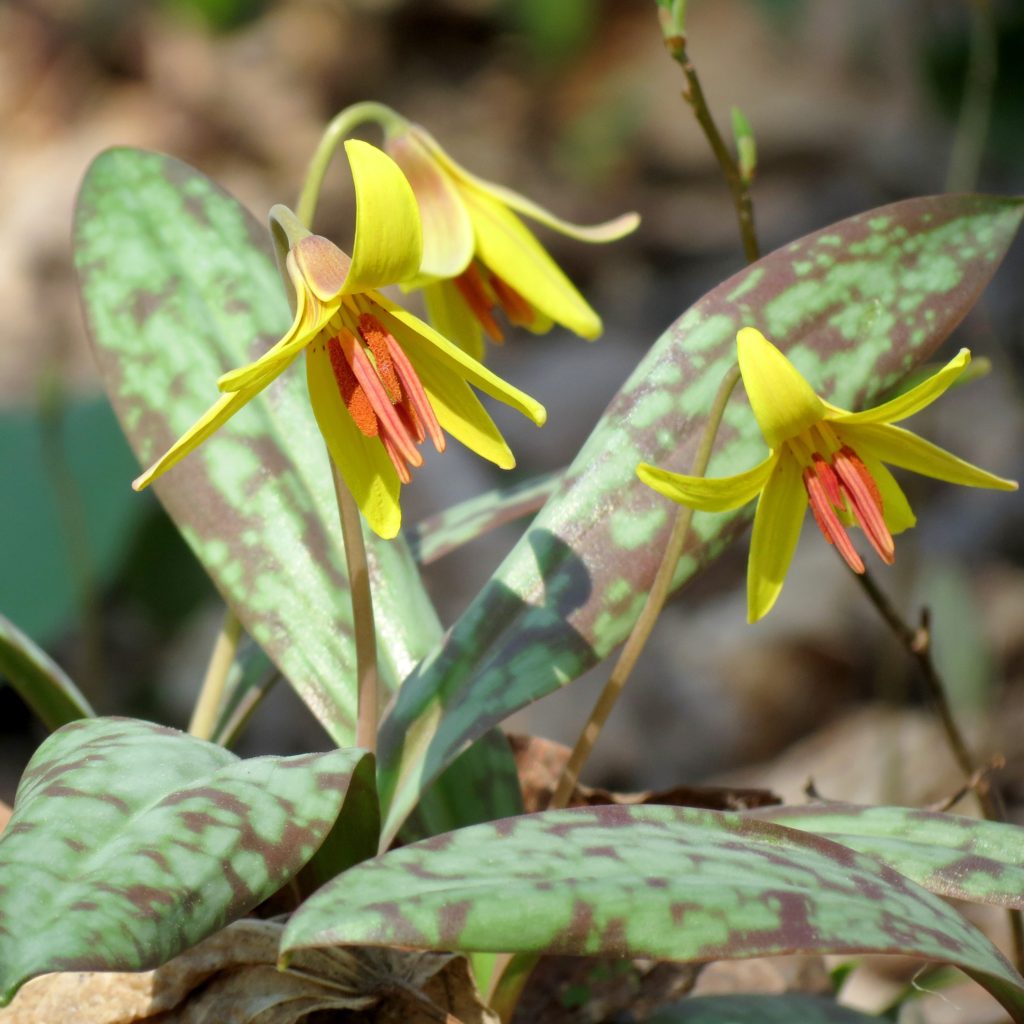Welcome to 2022! We’re excited to be back in the community at local native plant sales and hosting our own sales at our greenhouse. If you haven’t already, we recommend signing up for an appointment so you can peruse our nursery. However, the best news of 2022 is the new plants we’re offering. While quite a few plants are unavailable this year due to high demand, our selection is now 160 native plants strong.
When you’re selecting plants, we remind you to choose various plants that bloom from spring to fall to provide interest in your garden all season long. A variety of plants also ensures nectar and pollen are available to pollinators throughout the season. Please purchase your plants early as we expect another busy season ahead. Without further ado, here are our new native plants for 2022:
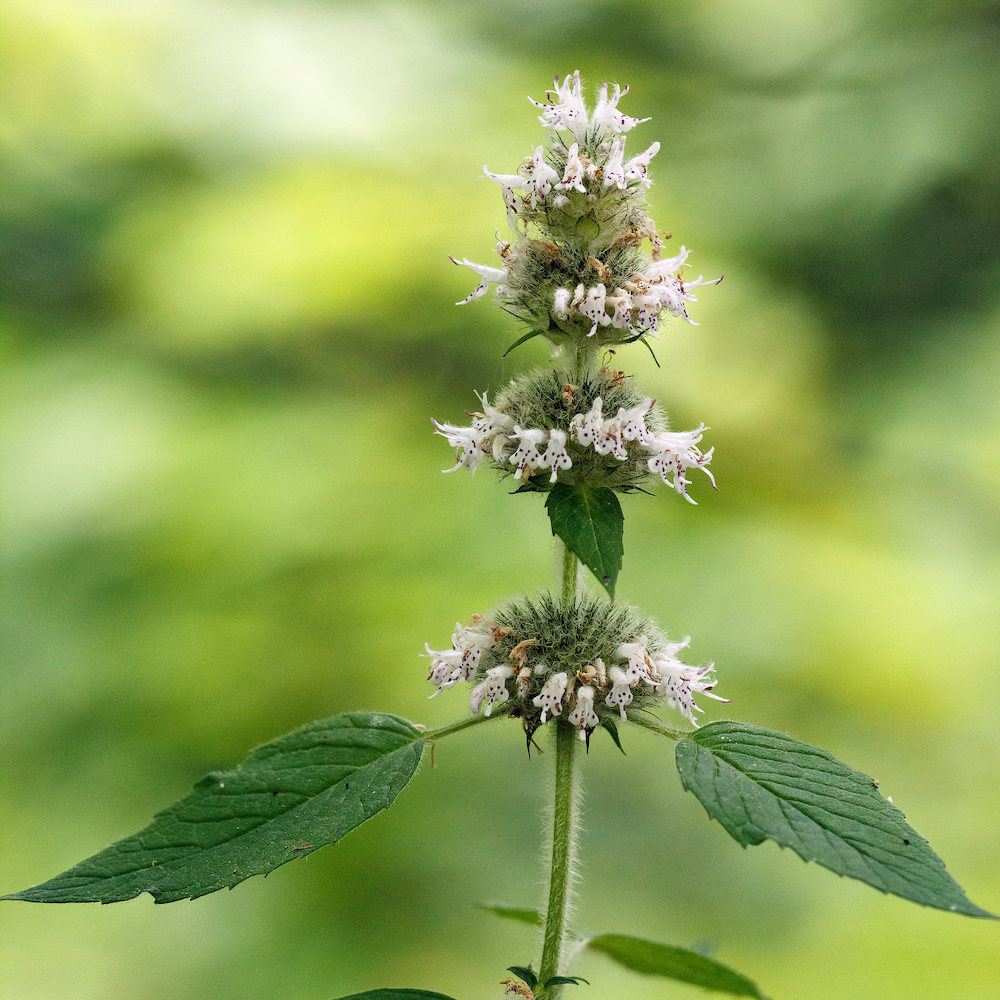
Hairy Wood Mint (Blephilia hirsuta)
Blephilia hirsuta, or Hairy Wood Mint, is a herbaceous, rhizomatous perennial with fragrant showy white flowers stacked on top of each other, reaching three feet tall. It thrives in part sun to light shade and moist soils. The mint-scented leaves and white flowers make a great addition to a shaded woodland garden or any partially shaded area. Pollinators, especially long-tongued carpenter bees, mason bees, and leaf-cutting bees, are highly attracted to its blooms from May to September. Thanks to its odiferous foliage, deer tend to stay clear of this native plant.
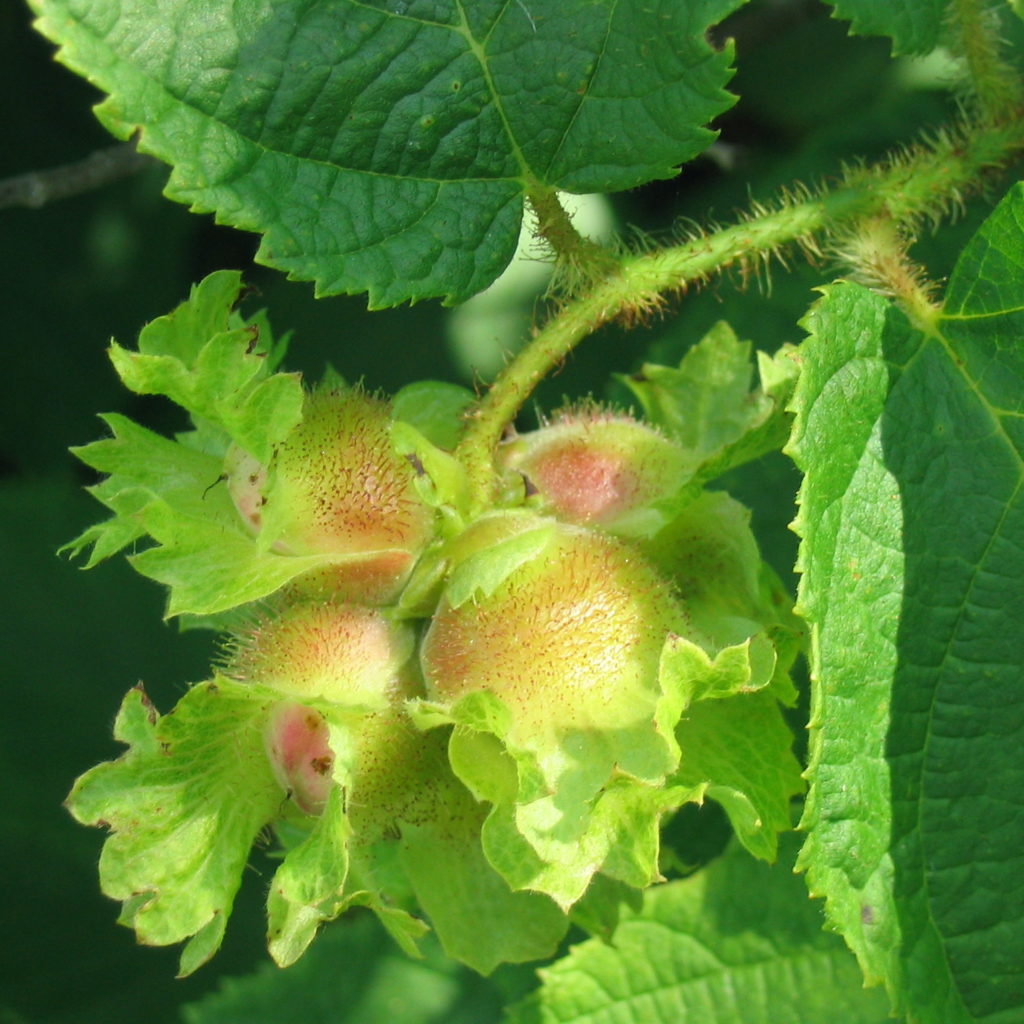
American Hazelnut (Corylus americana)
Corylus americana, or American Hazelnut is an easy to grow, 10-12 foot deciduous woody shrub that produces nuts in late summer to fall. Its deep green leaves turn a copper to yellow color in autumn. American Hazelnut makes a great hedgerow or windbreak and enjoys sun to part shade and moist to dry soils. The shrub produces showy blooms from March to April. Its edible nuts are enjoyed by game birds and small mammals and the male catkins are enjoyed by turkey and ruffed grouse in winter. It is also a host plant for Lepidoptera, particularly Polyphemus and Io moths.
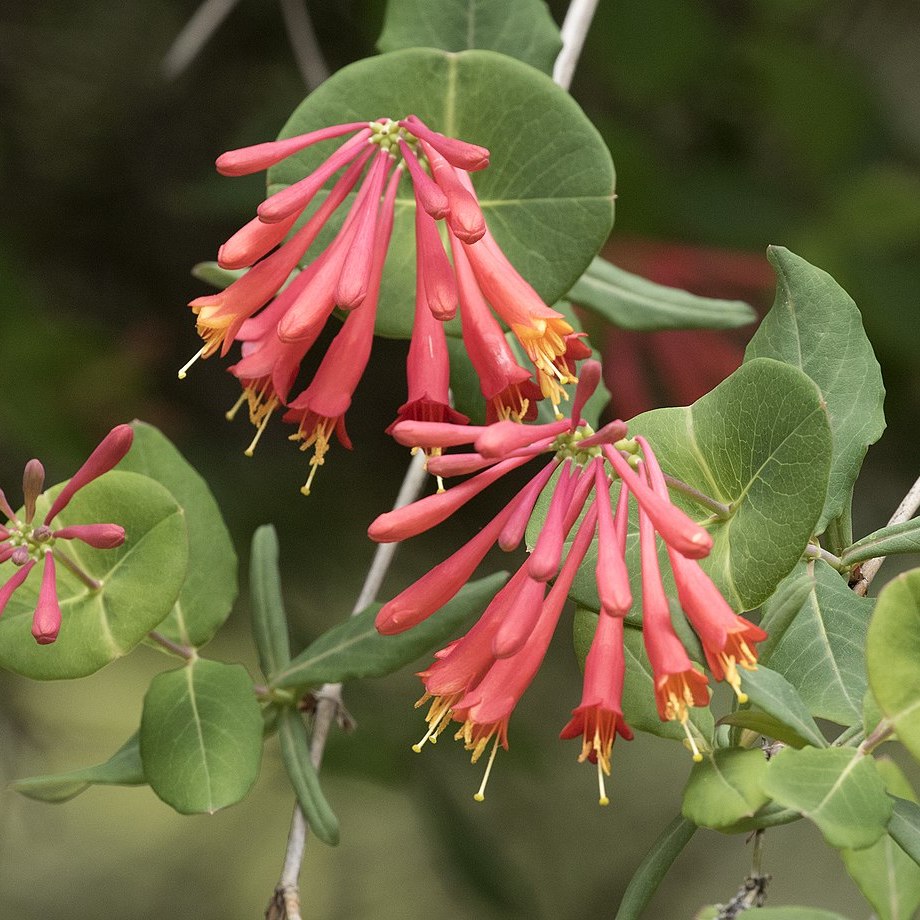
Trumpet Honeysuckle (Lonicera sempervirens)
Lonicera sempervirens, or Trumpet Honeysuckle, is a native woody vine and a hummingbird magnet, drawing pollinators to its coral-red flowers with golden yellow linings. Trumpet Honeysuckle or Coral Honeysuckle typically grows 10-20 feet, making it an excellent choice for training on a trellis, arbor, or fence. You can also allow the twining vine to sprawl as a groundcover. Trumpet Honeysuckle prefers medium moist, well-drained soil and full sun. One of the showiest honeysuckles, it produces small red berries in fall, making it attractive to birds. Occasionally, this vine will rebloom sporadically throughout summer and even into fall if the temperatures are warm.
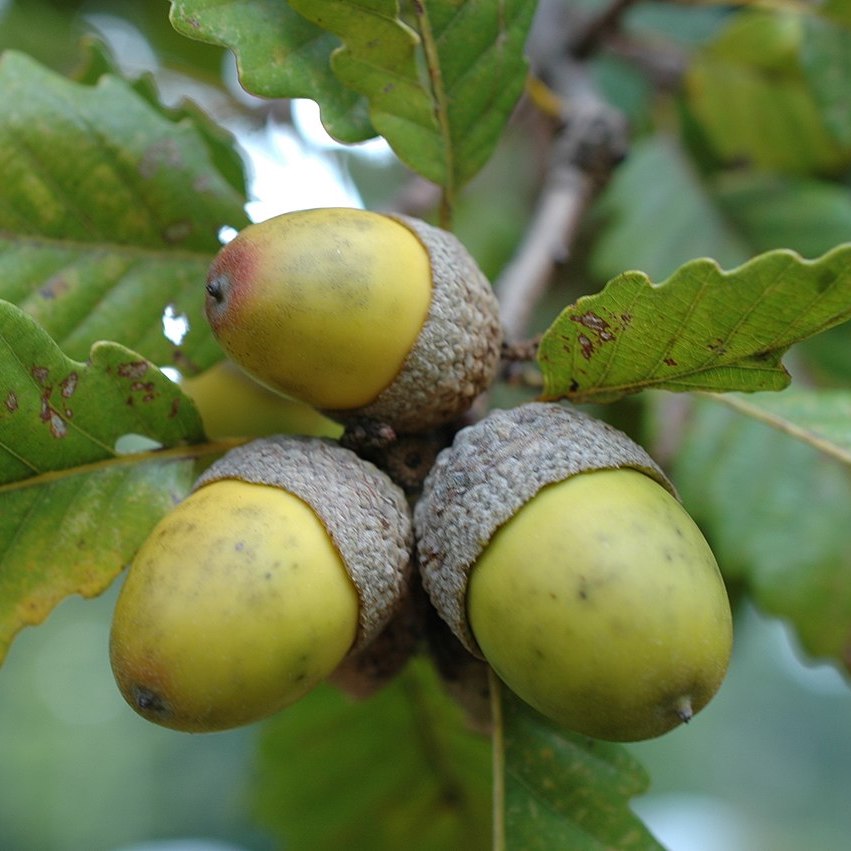
Chestnut Oak (Quercus prinus
Quercus prinus or montana is commonly known as Chestnut Oak or Rock Oak. The 60-70′ deciduous tree is native to the eastern US and is an important canopy species. The Chestnut Oak prefers full to part sun and dry to medium, rocky moist soils. The rapid-growing oak flowers in the spring and can be quite drought-tolerant. All oaks are valuable for their high-quality timber and prized acorns. Chestnut Oak is very important to wildlife, attracting insects, birds, and mammals.
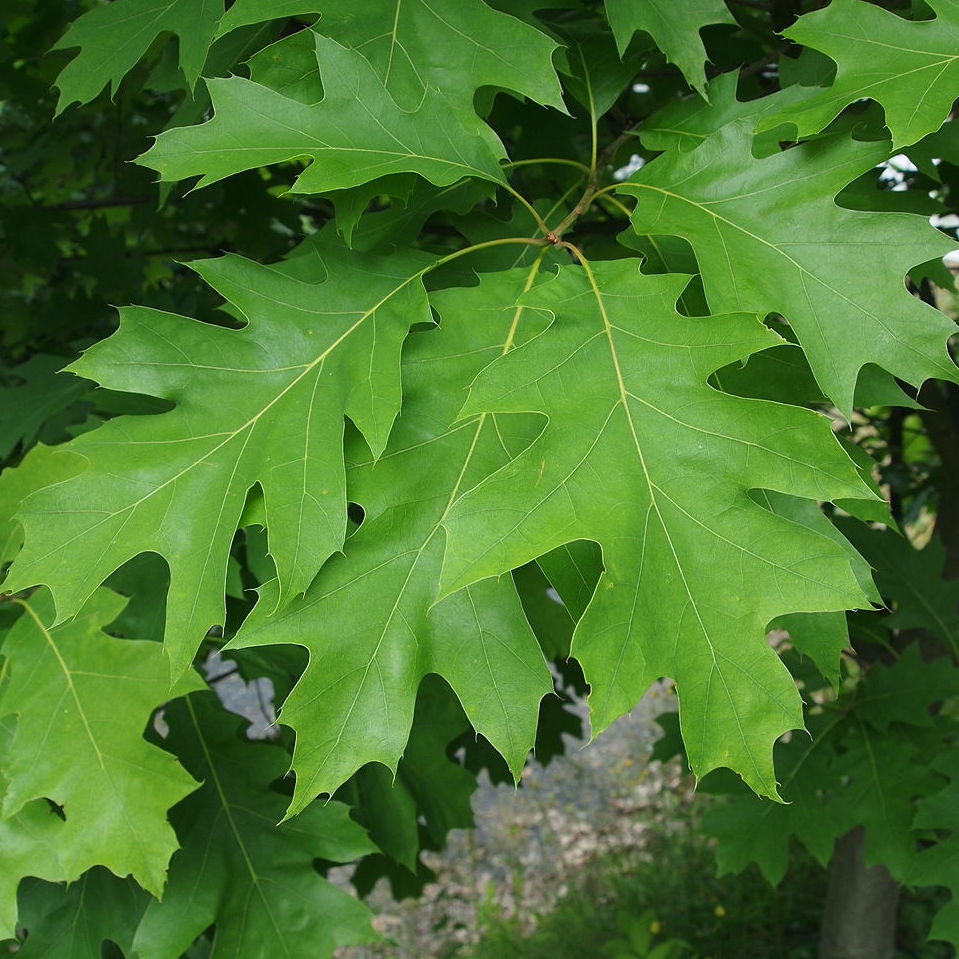
Red Oak (Quercus rubra)
Quercus rubra or Red Oak is a native deciduous tree to the eastern and central US and grows up to 60-70 feet. Red Oak prefers full to part sun and is very adaptable to any soil, from sandy to rich. Red Oak is the fastest-growing oak and produces red leaves in the fall. Red Oak is a very important tree to wildlife, attracting insects, birds, and mammals. Red Oak is also rather drought tolerant. This native tree is an important oak for timber production as lumber, veneer, fence posts, flooring, and more. The acorns can be collected in fall, shelled, tied in a cloth to leach and remove bitterness. Later, you can eat the acorns whole or grind them into a meal.
Please note, some plants on this list will not be available until later in the season. Check our availability list for more details.


